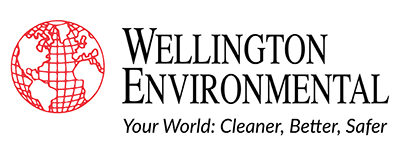The key to preventing Legionnaires’ disease is to reduce the risk of Legionella growth and spread by maintaining water supply sources properly.
Our team is working on two interesting cases concerning possible Legionella that serve as a reminder to building owners and managers of the importance of having up-to-date Water Management Plans for their facilities.
Scenario #1: Legionella Testing Methods
The first scenario is for a nursing home facility that had a resident admitted to the hospital for additional care. A day after the patient was already admitted, the hospital tested for Legionella using a PCR test. The test came back POSITIVE, and the hospital contacted the County Health Department to initiate an investigation.
The hospital performed an antigen test on the patient a day or two later; the results for Legionella were NEGATIVE. Since the hospital had both results and neither were a true “culture” test, which takes more than a week to get results, they rightfully treated the patient in ICU as a Legionella case.
Wellington Environmental specialists were called in immediately after the facility was informed that the State’s Department of Health and Senior Services Bureau, along with the CDC, would be performing a site visit the following day. Our meeting was to discuss strategy and preparation for the site visit and to revisit the Water Management Plan that we had prepared for the facility in 2019.
The State inspection included taking Legionella culture samples in key areas related to the patient, plus sampling the incoming water source and the cooling tower. Temperatures and pH tests were also taken at various locations in the building as part of the investigation.
Unfortunately, the facility has not had a full-time facility manager and many of the items on the Water Management Plan checklist were neglected for years. In addition, because the water supply pipes to resident sinks travel through the ceilings, coupled with the very hot temperatures experienced, the cold-water temperature was recorded at 83°F in the resident’s room by State inspectors.
The culture sampling the State performed inside the building were all determined to be negative for Legionella. Based on the event, we will be working with their facilities to re-educate the maintenance and housekeeping staff on how to prevent Legionella and legionellosis in their facilities and to review their roles in maintaining the Water Management Plan.
Scenario #2: Cluster Pseudomonas Cases
Wellington Environmental received a call concerning a nursing home facility that has numerous Pseudomonas cases. Somewhat similar to Legionella, Pseudomonas can be spread through water or soil that is contaminated. However, most cases are more commonly found due to surface contamination once the bacteria display.
Cluster cases of Pseudomonas must be investigated and acted upon immediately since 13% of cases are multi-drug-resistant which can be fatal. The CDC estimates there are 50,000 cases detected in health care facilities annually. Pseudomonas is formed in the skin of some healthy people and has been isolated from the throat and stool of non-hospitalized patients.
Common hospital-associated P. aeruginosa infections include blood stream infections, pneumonia, urinary tract infections, and surgical wound infections.
A plan of action was prepared for the Facility to investigate the source and protocols to follow for staff to aid in reducing cases. For many people, a Pseudomonas infection will only cause mild symptoms; however, the infection can be life-threatening for hospital and nursing home patients or people with a weakened immune system. Unfortunately, this bacterium finds ways to become resistant to antibiotics which prolong patient management and reduces treatment options.




